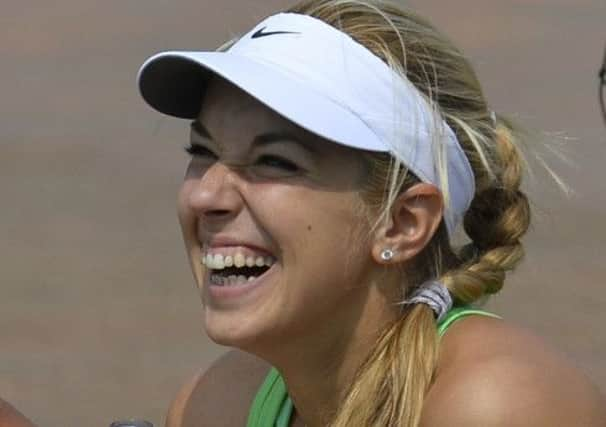Wimbledon: Bartoli and Lisicki offer final to savour


But after those first few days, nearly normal order was restored to that event: five of the top eight seeds reached the quarter-finals, and seeds Nos 1 and 2 made it to the last four.
The real changing of the guard has been in the women’s singles, which today witnesses a final between the 15th seed, Marion Bartoli, and the No 23, Sabine Lisicki. It is just the third final since the turn of the century not to feature a Williams sister – Venus did not compete because of injury, and Serena, the top seed this year, was beaten by Lisicki in the fourth round. Neither No 2 seed Victoria Azarenka nor No 3 Maria Sharapova made it past the second round. The other member of the leading quartet, Agnieszka Radwanska, at least made it through to the semi-finals, where she lost to Lisicki in the semi-finals. Also unusually, neither of today’s finalists has yet won a grand slam title. It is a situation which has only happened once here in the open era, when Jana Novotna beat Nathalie Tauziat in 1998.
Advertisement
Hide AdAdvertisement
Hide AdBut it would be wrong to conclude from the foregoing that Bartoli and Lisicki are lucky to have made it this far. They are not mediocre players who sometimes play a good match: far from it. They are outstanding players who have so far been denied the fulfilment of their talent by a mixture of injury and inconsistency.
Lisicki, who has twice suffered long spells on the sidelines because of an ankle injury, reached the semi-finals here two years ago, losing to Sharapova. Bartoli, at 28 the older by five years, got to the final back in 2007, when she lost to Venus. Both like to take the initiative. Neither is likely to walk off court at the end wondering what would have happened had she been a little bit more adventurous.
Lisicki has become a crowd favourite this year, in particular with that well-heeled section of London society which, like the Royal Family, is so English that it is almost German.
Bartoli has her admirers, too, but her antics between points can annoy some spectators.
It would seem reasonable to conclude that if both play as they did in their semi-finals, Bartoli will win, because she was more consistent than Lisicki.
But the standard of opponent has to be taken into account: the Frenchwoman was offered little more than token resistance from the injured Kirsten Flipkens, while Radwanska took the German to three sets.
So what will make the difference? Bartoli hopes it will be her experience, but predicted yesterday that she will have to be on top form if she is to prevail.
“Of course, having the experience of being out there already, especially on the same court, the same stage, will all definitely help,” she said. “But I think a final is always extremely open, and I know I will have to play the perfect match if I want to have a chance to win tomorrow.
Advertisement
Hide AdAdvertisement
Hide Ad“We both hit the ball pretty hard, pretty flat. Sabine is definitely serving faster than me, especially on the first serve. I might take the ball a bit earlier. But obviously we both have the same thing, playing fairly flat and from the baseline and trying to hit some winners.
“I think first of all it will be a battle of nerves and who is able to come up with the best game on that day. A final of a grand slam is always a matter of details. Maybe a point here, a point there, will make the difference. Maybe someone who is a bit more gutsy than the other player, someone who is having a better day than the other. We are very close in terms of level, I believe. It will be, I’m sure, a pretty good match.
“But Sabine has played some amazing tennis so far. She might be too good for me tomorrow, as well.”
It took a while for Lisicki to become so good on grass – when she first came to Wimbledon, her hay fever was so bad that it prevented her from playing her best tennis on the grass. Now, with the allergy under control, she has recognised it as her best surface.
“I learned how to cope with that. In the beginning, the first time I was here, which was, what, five years ago, I really was struggling with the allergies. But by now I know what to do, what to take, to calm those allergies down. I’m on medication.”
It’s not the sort of medication that calms her down. Like Bartoli, Lisicki plays with heart and aggression – another factor that makes the match so hard to predict. “It’s a final, so it’s going to be good, I think,” was Lisicki’s forecast.
“She plays aggressive tennis, so it will be a totally different game than yesterday [against the defensive Radwanska]. You know, I had a lot of challenges on my way to the finals with players being aggressive, players who were very solid, moving very well, so it will be another challenge. I’m really looking forward to it.”
After those years in which a single American family had a virtual stranglehold on the title, she is not the only one.